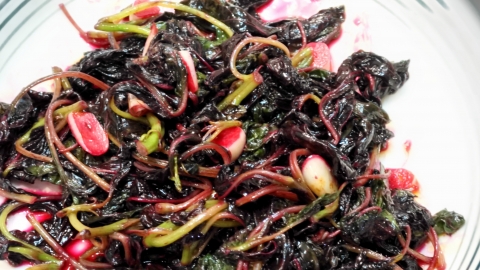Can soft-shelled turtle and amaranth be eaten together?
"Han Cai" usually refers to amaranth. Under normal circumstances, soft-shelled turtle can be consumed together with amaranth, but excessive consumption should be avoided. Detailed analysis is as follows:

Soft-shelled turtle is rich in protein, vitamin A, calcium, and other nutrients, while amaranth contains abundant dietary fiber, vitamin C, and minerals such as potassium. Consuming them together can provide comprehensive nutrition, which is beneficial to health. However, the freshness and cooking methods of the food should be noted, and raw or undercooked food should be avoided to prevent food poisoning.
However, amaranth contains relatively high levels of oxalic acid, while soft-shelled turtle is rich in calcium. Their combination may form calcium oxalate precipitate, which affects calcium absorption; long-term excessive consumption may increase the risk of kidney stones. At the same time, soft-shelled turtle is rich in protein, while amaranth contains high levels of dietary fiber. Consuming large amounts may increase digestive burden, causing bloating and abdominal pain. Therefore, it is recommended to control the consumption amount of soft-shelled turtle and amaranth in daily diet.
In daily diet, it is also important to focus on balanced intake of various nutrients, avoid excessive consumption of high-calorie and high-fat foods, and maintain good living habits.





